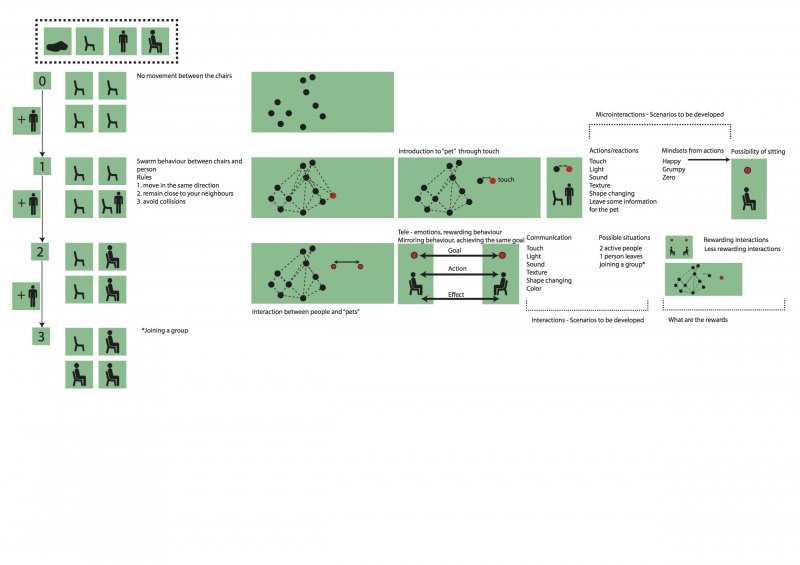Difference between revisions of "project02:Frontpage"
| Line 10: | Line 10: | ||
==How?== | ==How?== | ||
| − | For example, chairs are designed and manufactured by man in order to serve a very specific purpose, to be sat on. The relation between a chair and its user is very one-directional, subservient, where the chair is the lesser of the two. By giving anthropomorphic qualities (and some sort of intelligence to act upon) to objects and environments the user might take a different perspective and approach in treating or using these objects. The intent is to stimulate a more give and take, bi-relational interaction. Both participants (object and human) being more or less equal in their relation. The chair might just want to stretch its legs and go for a stroll after a while of being sat upon, it could even reward its user with a massage for certain behaviour. | + | For example, chairs are designed and manufactured by man in order to serve a very specific purpose, to be sat on. The relation between a chair and its user is very one-directional, subservient, where the chair is the lesser of the two. By giving anthropomorphic qualities (and some sort of intelligence to act upon) to objects and environments the user might take a different perspective and approach in treating or using these objects. The intent is to stimulate a more give and take, bi-relational interaction. Both participants (object and human) being more or less equal in their relation. The chair might just want to stretch |
| + | its legs and go for a stroll after a while of being sat upon, it could even reward its user with a massage for certain behaviour. | ||
| + | ==Research== | ||
| + | |||
| + | Research_01_Living_Chair | ||
| + | [[File:chair thing.jpg| 800px]] | ||
==What?== | ==What?== | ||
Revision as of 10:46, 21 March 2014
_The Living Room_
Why?
Anthropomorphism – attributing humanlike characteristics and behaviour to gods, animals, plants or objects.
The Living Room would be an artistic installation to redefine the relationship between humans and their surroundings. It intends to overthrow the conventional forms of usage and how we perceive and treat our surroundings in order for the user to rethink, maybe even recalibrate his perception and interaction towards his surroundings.
How?
For example, chairs are designed and manufactured by man in order to serve a very specific purpose, to be sat on. The relation between a chair and its user is very one-directional, subservient, where the chair is the lesser of the two. By giving anthropomorphic qualities (and some sort of intelligence to act upon) to objects and environments the user might take a different perspective and approach in treating or using these objects. The intent is to stimulate a more give and take, bi-relational interaction. Both participants (object and human) being more or less equal in their relation. The chair might just want to stretch its legs and go for a stroll after a while of being sat upon, it could even reward its user with a massage for certain behaviour.
